Engine Info via Adam Tune+
Log in to replyHome › Forums › Performance › Engine › Engine Info via Adam Tune+
- This topic has 15 replies, 2 voices, and was last updated 4 years, 2 months ago by
 71-bda.
71-bda.
-
AuthorPosts
-
December 25, 2017 at 10:45 PM #75353
Taken from Adam’s Facebook post. I will try and update with photos.
2.3L Block cracking / Headgasket update. This is going to be VERY long, but worth the read.
I have posted about this before, and we have came up with a “fix” for the 2.3L block cracking along the head stud bosses on the side of the block. However this is STILL not a fix for the block cracking issue. After further investigation and testing, we have determined the cause of the factory blocks cracking on the 2.3L variants.
*Deep breath, time to mash the keyboard*
It has been believed that the cause of the blocks cracking have been the fact that the head stud bosses are weak and/or have casting flaws. The upward force from compression/big boost on the cylinder head has been putting stress on the side of the block and causing a stress crack as shown in PICTURE 1 below (factory engine, not built).
This is not the case, in fact in nearly every instance of a block cracking a blown headgasket has accompanied it. I say nearly because not everyone has been documented accurately. On the Focus RS side of documentation there have been mentions of the block being cracked, but never mentioned if the headgasket failed as well. Most of the time when a dealer gets a cracked block Focus RS/Mustang in their shop they simply pull and install a new OEM longblock. Obviously if you follow the Focus RS pages and many blog post you know there is a headgasket problem with the Focus RS.
This blows my mind as I have mentioned it as a problem on the Ecoboost Mustang side, instead people want to blame engine failures on the Mustang 2.3L side on the tune or simply because Ford cheap on the rods/pistons. There are no differences between the Ecoboost Mustang and Focus RS block. The only difference is the block has a machined provision for the PTO/PTU on the Focus RS and the Mustang uses the provisions to mount the engine. (Cylinder head gets different exhaust valve springs, otherwise the same)Yet, it is a HEAVILY documented issue on the Focus RS side but not the Mustang side. Reason? The Focus RS is a limited production vehicle, and nearly every owner is an enthusiast, nobody really buys a Focus RS just because they liked the way it looked on the lot. If they did, they would have just bought a Focus ST. RS Owners are a tight nit group, and as we all know Enthusiast’s love Forums and Facebook groups. So, it gets documented. The Mustang is massed produced, some people just drive their cars and enjoy it and never mod them. So when a failure comes a long it is either documented with a false reason or just not documented at all. So let’s thank the Focus RS group for being logical and sticking together to make sure it is documented (See link below for documented cases)
https://docs.google.com/spreadsheets/d/1Oh8nCvLr1w7SVNUHaO5zI5RQoW6j5SwE2kVxJQQcCj8/htmlview
Since the Ecoboost Mustang came out it has received 5 part number changes/revisions. Some say it is because Ford changed suppliers, some say it is small minor changes to increase efficiency in the manufacturing process. Or maybe it is because Ford was chasing their tail on trying to solve engine/headgasket failures?
Back on topic, so whats happening?
Multiple things, but the root cause (In my opinion) is the headgasket. When the headgasket fails it fails in two parts. This is based on my personal research from the different engines we have disassembled and cars we have had failures on. The gasket fails between cylinder 2 and 3, and it is looking like the headgasket fails majority on the #3 side. When it fails it pushes coolant into cylinder 2. Now there have been multiple symptoms of a headgasket failure. If it fails during normal driving you start to get misfires and smoke out the exhaust. If it fails under load you can have the same symptoms or even worse an engine failure. Going back to blaming Ford for using cheap rods/pistons, this is true, they are cheap, but this is an economy oriented engine and it was never meant to see high horsepower. With that said, when the gasket blows under load the cylinder pressures are increased from detonation and the fact that coolant is non-combustable. So the weakest point loses, and in some cases that is the rod and it shoots out the side of the block.
So, why is the block cracking?
If you don’t chuck a rod, when the second stage of the gasket failing happens all the pressure from the cylinder goes out into your coolant jackets surrounding your cylinders. We are talking an EXTREME amount of cylinder pressure especially if there is detonation from coolant being in the cylinder. The coolant system only sees about 20psi during normal operation, so seeing 1000psi+ of cylinder pressure is extremely stressful on a system not designed for it (Coolant system).
In this case the weakest point is where the cylinder head bolts/studs go into the block. See PICTURE 2 and 3 below, you will see that where the block cracks is located on the exhaust side of cylinder #2. Besides this being a weak spot based on casting design alone this is also the highest area on a block when in operation. This is where the TURBINE side of your turbo sits. So when the recipe for disaster was already at a critical point, we sprinkle a little bit of 1500°F+ into the mix. So the material here is thin, and soft from the heat of the turbo charger. There is a heatshield on the turbine housing on the OPPOSITE side of the block so the heat is being retained in this area.
Now that we went over why the block is cracking, lets go over some headgasket fun.
In pictures 4-9 you will see the revised gasket from Ford on top of the previous gasket that was in the Focus RS. Mustang guys, you have the previous gasket still to this date. I have not disassembled a 2017+ Engine yet to see if the gasket is different but as of recently the 2016 engine had the gasket shown on the bottom (4 pieces).
Picture 4: Shows original gasket versus revised gasket
Picture 5: Shows layers held together by Brass Rivets versus a dimple press. Brass rivets are a MUCH better way of assembling layers on a gasket. Just watch out in swap scenarios where the brass rivet might sit on the block and head mating surface.
Picture 6: Showing the original gasket has more coolant holes than the revised gasket. The revised gasket is has blocked off these ports from flowing coolant from block to head and vice-versa.
Picture 7: Showing the original gasket has two coolant relief holes on both the intake and exhaust side (Exhaust side hole is covered by the revised gasket). Revised gasket only has one MUCH larger hole on the exhaust side.
Picture 8: Showing both gaskets disassemled
Picture 9: Showing what I believe the cause of the failure is on the original gasket. This thin layer that sits between the layers is obviously only “working” near the bore. This layer is .0015″ thick, and the relief holes are also present in this layer. This means the material between the HIGH pressure of the cylinder and the coolant relief is only .0015″ and .1345″ wide.. Not much sealing surface to do such a strenuous job. The revised gasket does not have this layer, instead it has a full-size layer that is 3x and thick doing the job and the distance between relief hole and cylinder is doubled, and eliminated on the intake side.
The original gasket I pictured below came off an engine that showed signed of seeping in cylinder 3. Luckily we caught it before it completely failed. The revised gasket came off the engine with “ORANGE” pistons in it. That orange is from race-gas, so that tells you the engine was ran pretty hard and it did not fail. The revised gasket is doing it’s job, so far. This is also the gasket that is present on Arthur Bianchi’s car that we made 520whp/500wtq with. His engine was built before we had our hands on JE gaskets. So again, so far so good.
Now, previous fixes, and fixes moving forward.
As most of you know we use 2.0 blocks for all of our builds for the Focus RS. The 2.0 block is robust in this area of cracking, and on the entire side of the exhaust side of the block. Though it is a 2.0L block, the displacement is 2.3L just like factory as we use all 2.3L internals. This completely eliminates the block cracking issue, and gives us a closed deck block versus an open deck block. For the 2.3L blocks, middle of 2017 we started welding the blocks in the area of failure to hopefully eliminate the cracking issue. However, this was wrongly diagnosed as the mountain of text above disclosed. So welding on the bolt/stud bosses did not fix the issue.
See PICTURE 10 below, this was Version 1 proposed fix. We welded the void under the bosses and the bosses themselves.
PICTURE 11 and 12 below shows that with Version 1’s fix the block still gets hairline cracks on the SIDE. So we just moved the failure point, so this is not a fix.
Picture 13 shows Version 2 proposed fix. This is a SOLID option, however it does not address the sides of the bosses that also crack as shown in Picture 11/12.
**Below is going to get into TunePlus, Inc customer territory, so if you aren’t a customer or have no desire to be a customer (Steve Tabe, hate you) stop reading here unless you want to see what we are offering**
All of the above proposed fixes were for something that wasn’t even the root of the problem. Not to mention it was just moving the point of cracking to the next weakest area. The problem is the headgasket itself, keep the headgasket from failing, and your golden. However, as an extra step of precaution we are also going to start using 2.0L blocks in the Ecoboost Mustang as well. We will be making a jig that holds a 2.3L Block just like the factory mounts do, then mocking up the 2.0L block and building mounts for it to drop in without any fabrication on the customers end. This eliminates the need to replace the 2.3L block if you magically pop a JE Headgasket (to date, no JE gaskets have failed, even beyond 600whp) and crack the block and the added benefit of a closed deck block.
So, while it does suck that we had to build a few engines in late 2016, early 2017 with OEM gaskets, we had no choice as there were no other option available on the market. Blaming the fact that the block wasn’t welded isn’t going to fly as you can see. So for any customer that has a built engine by us with a OEM gasket we will send you a JE Gasket for F-R-E-E. If your OEM gasket failed on your built engine and cracked the block we will build you a new 2.0L (2.3 Displacement) shortblock 100% AT COST. If you ship the car to us we will give a significant discount on labor as well. Other companies would just say “Ford’s Fault, we built with what we had available”. While that is true, we never want anyone to regret any purchase decision they made so we are offering to get you up and running for as little cost out of pocket as possible.
If it weren’t for the Focus RS group having shared their different types of failures it would have taken us longer to come up with what we think is the linked cause of failure. So shout out to those guys/gals!
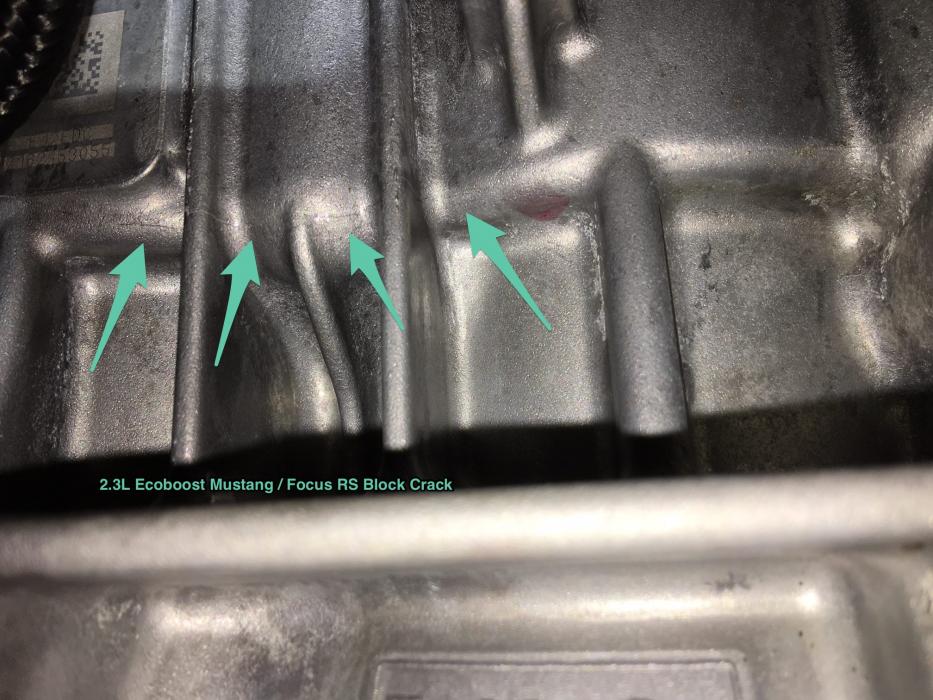
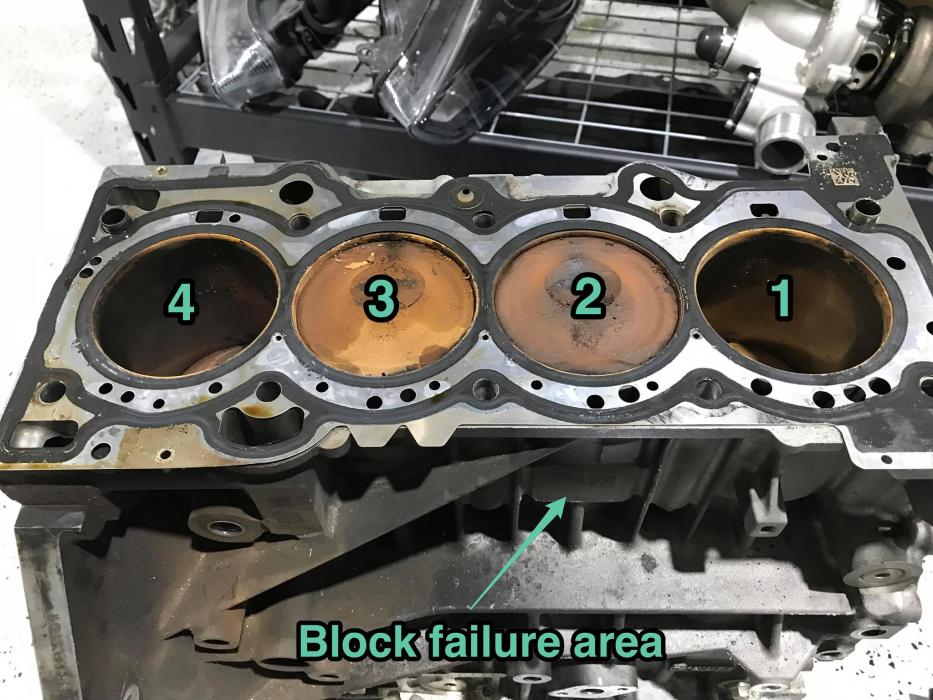
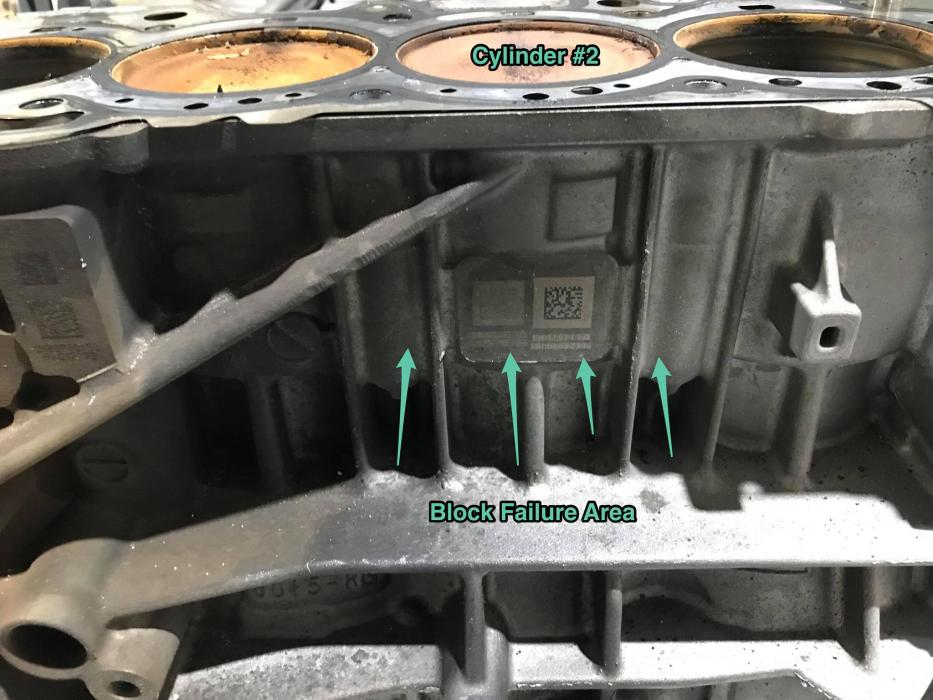
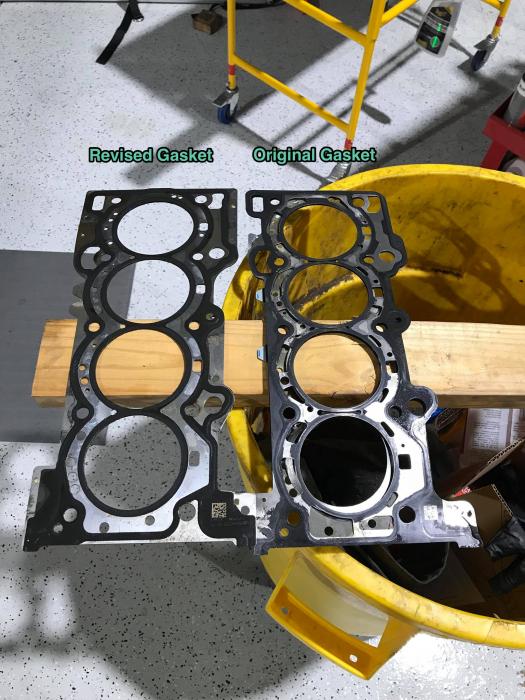
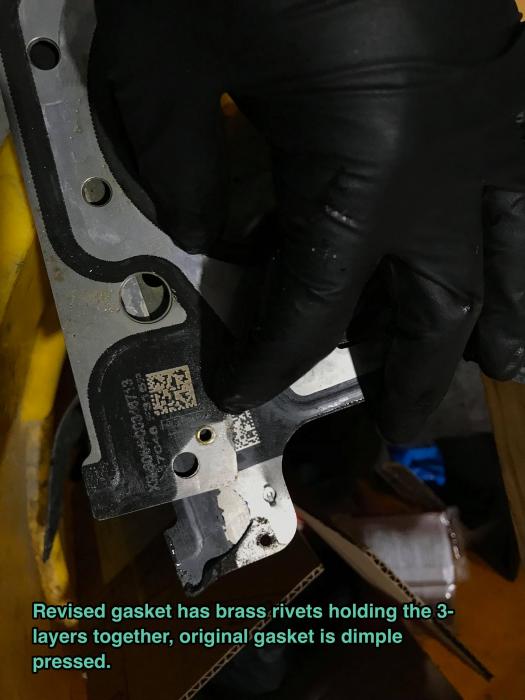
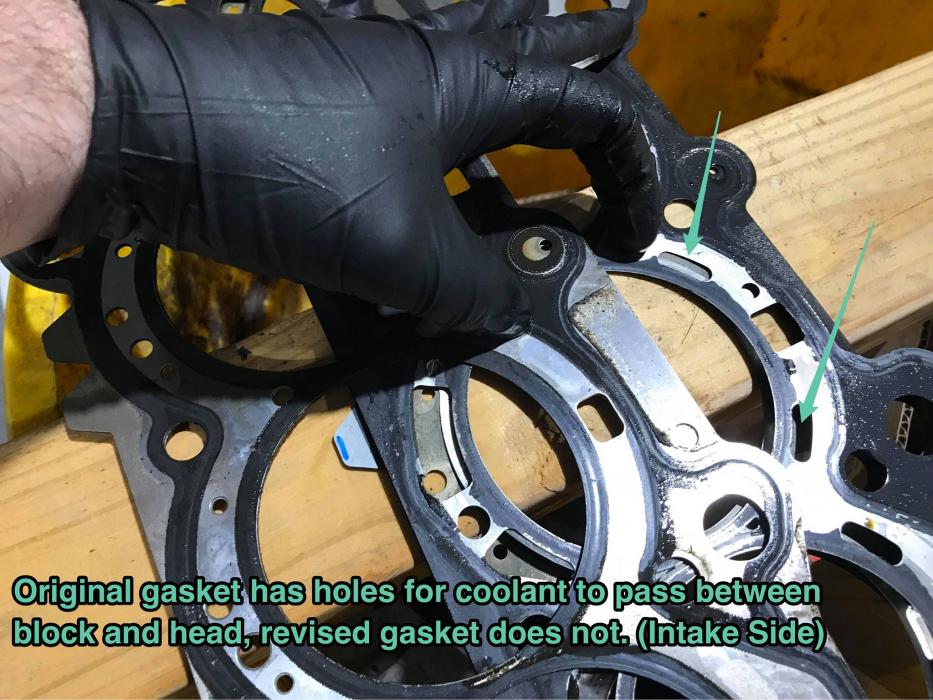
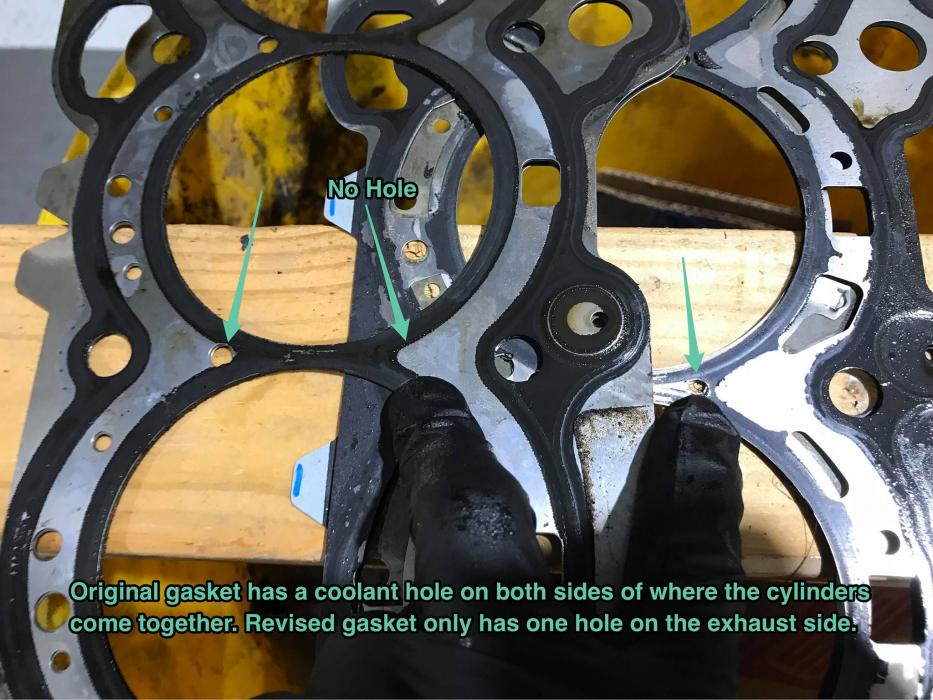
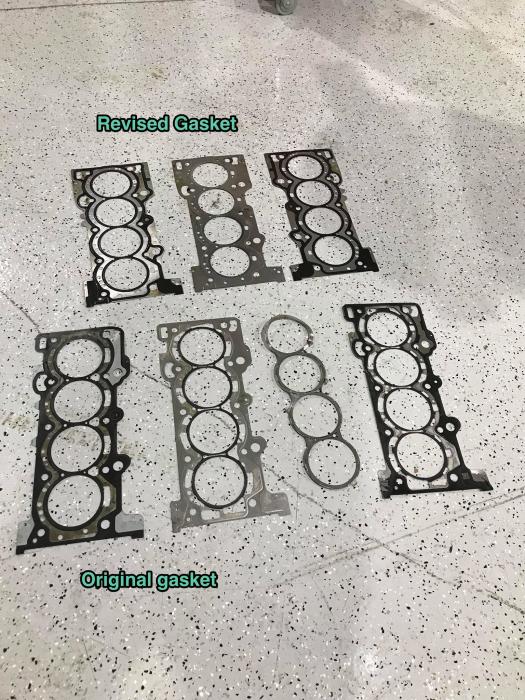
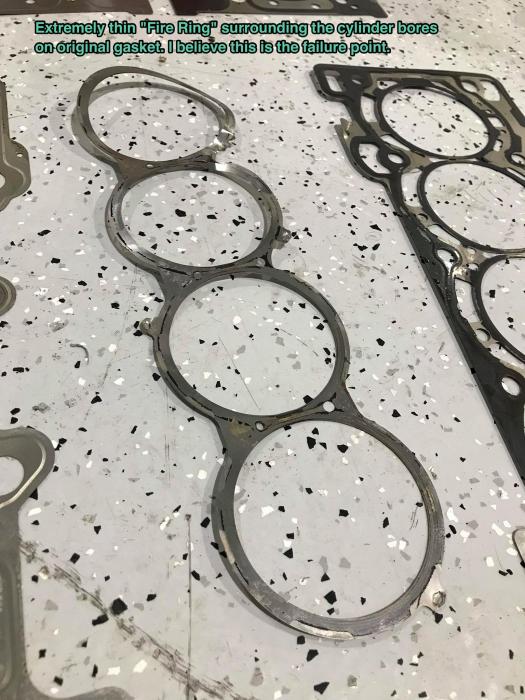
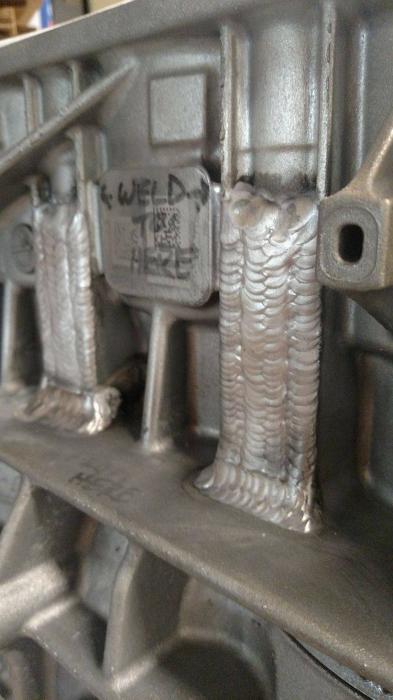 December 26, 2017 at 2:27 AM #75357
December 26, 2017 at 2:27 AM #75357Thanks Kenny, so in Adams view, the 2.3 ecoboost engine is a flaming piece of sh*t. Adams company has tuned and built a lot of ecoboost cars so I do value his opinion, a couple take aways, the mustang and RS have the same block minus some machining? So the mustang also has 9mm thick liners? He claims the head is the same minus the exhaust valve springs? So we’ve been lied to and misdirected? Either ford or Adam are mistaken here, I swear I really do like this car but it gets harder and harder everyday to have a good feeling about it’s engineering and longevity.
December 26, 2017 at 6:51 AM #75358I’m not sure I buy this….how does a leaking gasket pressurise the water system massively when it has a pressure cap that vents at about 20 psi…..also surely other parts of the system are weaker than the block….such as the heater core etc….Also on the cars that have just had a gasket replacement this would not tally. Not saying it isn’t the cause sometimes….but to me it looks like block and head warpage.
It is very interesting to hear that the 2.0 as in the ST is a closed deck….it is basically the same engine so why Ford would use the more expensive production method on the cheaper higher volume car is odd.
December 26, 2017 at 7:24 AM #75359Looking online at the 2.0 block they are indeed closed deck….which cost more to make and have more stable cylinders….why on earth did Ford not just use this as the base for the RS Using a longer throw crank…as the bores are apparently the same.
If the RS is never fixed by Ford maybe swapping the RS crank into a ST block might be the answer. Not sure if the RS head will mate correctly though.
December 26, 2017 at 8:48 AM #75362Brilliant example of why you shouldn’t believe everything you read on the internet. All credit to them owning up they got it wrong and fixing their customers cars FOC.
I didn’t buy what they said in the first place, nor what they much say now. Shame no one has told them liquid doesn’t compress, might have saved them a lot phoo theory. Did I read they think the turbo heat is making the block soft???? Have they never seen an engine in a test cell on a dyno doing heat runs, they think Ford didn’t do this??? Pressure in the water system? …oh dear.
Lets take another positive though , they have an engine running with 520hp with the new gasket and it’s holding up.
The best idea is not to read these internet theories, enjoy the car and keep close eye on coolant level, if it drops get to the dealer ASAP for Ford to fix. A little knowledge is dangerous and only worries people into hysteria ?
Magnetic Grey with all the best bits
FPM375/COBB/MSD- Quaife LSD, DSC+Tractive Suspension, HJS200 cell sports cat and MT Cooler. Sync3 upgrade.
Was UK seller for DSC & Tractive Active suspension !!!
December 27, 2017 at 9:13 AM #75409Not sure I agree with 100% of it but worthwhile read never-the-less.
December 27, 2017 at 9:19 AM #75412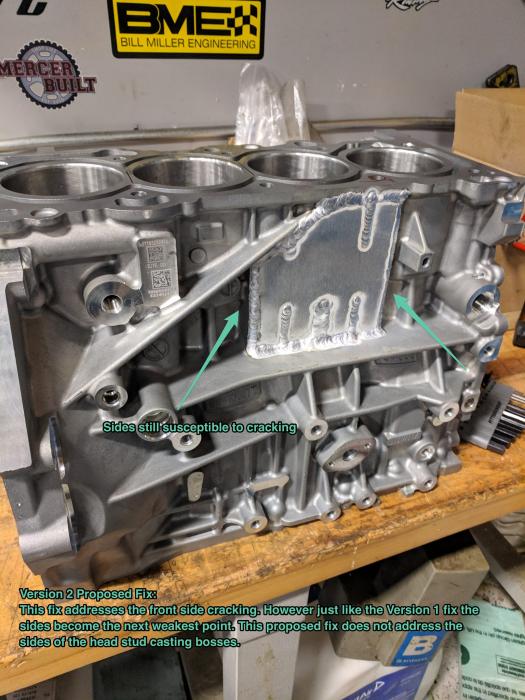 January 2, 2018 at 1:05 PM #75728
January 2, 2018 at 1:05 PM #75728Hi Guys. Very interesting reading all the posts regarding Focus RS cracked blocks. I engineer a Focus RS 3 Production race car here in Australia. The original engine, after 3500 Kms of running in has completed one 6 hour race at Bathurst (2nd Outright) and six 300 Km races plus all the practices during 2017. The car was purchased mid 2016. Not sure of the build date. Noticing on many posts of the blocks cracking I was some what concerned about our engine and when it would fail .After a look of research quite frankly I could not determine clearly any reason for the failures as I have not found any here. Manufacturers have a number of casting lines, I wonder if all the blocks that have failed may have been cast on one particular line?
Recently stripped the original engine and found some not so reassuring issues. Number 3 cylinder out round by more than .004″ (this cylinder had more than 43% leak down) The other alarming issue was the deck of the block had a .006″ dish in the middle. Although we never blew a head gasket there are signs of weeping. Data showed ET of 115 c+ generally when behind other cars. Early days for our team and this car. The team purchased a new engine for this year (2018) and plan to rebuild the original engine after some thorough testing and inspection of the block. I would be indebted to any member that has hands on information or remedy, other than welding as that is not allowed under our regulations. Re oil changes our team will change the oil after every race. Tune is by COBB Access port.Cheers. The Focus is a great RS car the last great RS I was involved with was the Mk II Escort RS 2.0 L Rally car of the 70s (1977 on)
January 2, 2018 at 3:32 PM #75734@ Bob. have you looked to see what headgasket your engine had? there is some talk of some getting the wrong, ‘Mustang ‘ gasket. Maybe compare it with the latest spec one. Are you allowed to use the liner/top deck brace that is available? I think I would convert to the 2.0 st block as that is closed deck ( again, if you are allowed!) I also always add redline water wetter to the coolant mix for good results and run a low 5-10% antifreeze/ distilled water mix. Do you have/ are you allowed some nice air vents in the rear/sides of the bonnet to try and keep under bonnet temps down too??Every little tweak helps!
No nothing.
No Mods. No rockers. Just a chunky knob, thats now been replaced by an RS knob innit.
No tackiness.
Std as Ford intended, but with a space saver wheel and jack and nuts and wheel brace. oh.. and flaps, a man has got to have flaps.
Innit?
January 2, 2018 at 10:08 PM #75748These engines are cracking the blocks due to head gasket failure and the injection of mulled lbs of pressurised steam being pushed into the waterways, most engines of this type would also self destruct if the head gasket failed and super heated water / steam went into the water jackets.
RS Edition.
FPM375 Rocks
The rest of the “M” maps suck
January 2, 2018 at 11:12 PM #75754Lets hope FMC can soon confirm that the vast majority of the failed gaskets were indeed due to Mustang gaskets EJ7E-6051-HA found to have been fitted in error and confirm gasket replacement as an official fix.
January 3, 2018 at 8:41 AM #75760A race car in a season would probably have more wear on its internal than a road car has after 5 years if not more. The loads placed on an engine are massive when you are on track being competitive compared to the road warriors driven cars.
If you Brace the upper section of the block so in theory it’s kind of semi closed, youll have a motor capable of being able to give it guns for a long time, as long as you have either a proper aftermarket head gasket or the latest spec Ford version.
This engine hasn’t been proven to be a lemon yet. It’s just got a lemon for a head gasket. Once this HG issue is put to bed the engine should be good for plenty of power. All the existing High Power cars all use the original 2.3 motors as it’s fundamentally a good engine just a shite gasket.
As for Adam “being SCARE mongers” with the 2 litre block option is just that scare mongering, the 2.3 if (HG) sealed correctly the engine will be man enough for 95 percent of owners, unless you hit th 700+bhp bracket but then who knows it still might surprise you, As across the pond their are a few 650whp cars running the original 2.3 blocks.
By no means am I inferring that open deck is a better design than closed. But open deck isn’t a bad design at all; example: the RS2.5 Volvo five pot open deck motor good for 1000+ bhp, But again needs bracing and has the same issue as the 2.3 liners move, but everyone raves on how good it is.
The SCARE MONGERS will kill this car and if your inclined that way also kill its value
Offering a JE HG very admirable but that’s about £47 cost what about the £250 worth of ARP bolts you have to bin and replace and labour to fit the bloody thing
Rant Over
RS Edition.
FPM375 Rocks
The rest of the “M” maps suck
January 3, 2018 at 11:21 AM #75768Hi All, Checked the top of our block today and it is different to the one posted by Kenny on 27 12 17 with the caption ‘ Version 2 proposed fix’. Our block does not have a slot between cyl 1 to 2 – 2 to 3 – 3 to 4. It is completely joined, there is a small blind hole approximately 3mm dia on the exhaust side. I’ll upload a photo once I figure out how to.
The head gasket that was fitted is like the one on the right Kenny’s photo 4 – two holes. Due to the punishment our drivers gave (always they are to blame) the engine I don’t think we will have a problem with cracking. I’ll post more as I delve into it. Always as part of my builds I finish the surface of the head and block to near on a mirror finish.
71-bda. Thanks for the tip. Yes, every little tweak helps. On a recent temperature test, my data showed we need to improve the airflow through the engine bay and slow the water passing through the radiator. Cheers, Bob.
Always wanted a Mk 1 BDA and a Mustang. Something went wrong sold the Mk 1 and ended up with Mitsubishi Starion GpA, Evo III GpA (Works spec) Galant VR4 GpA.
January 3, 2018 at 1:24 PM #75770@ Bob Riley… just to rub it it in !!! 😎
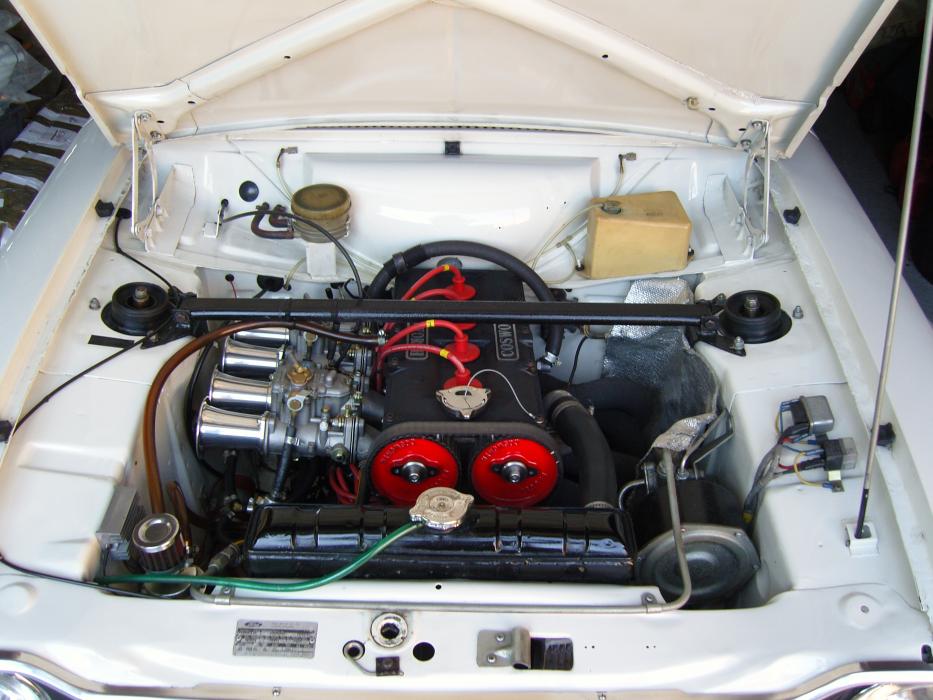
and more recently with longer inlet manifolds/ shorter rampipes..
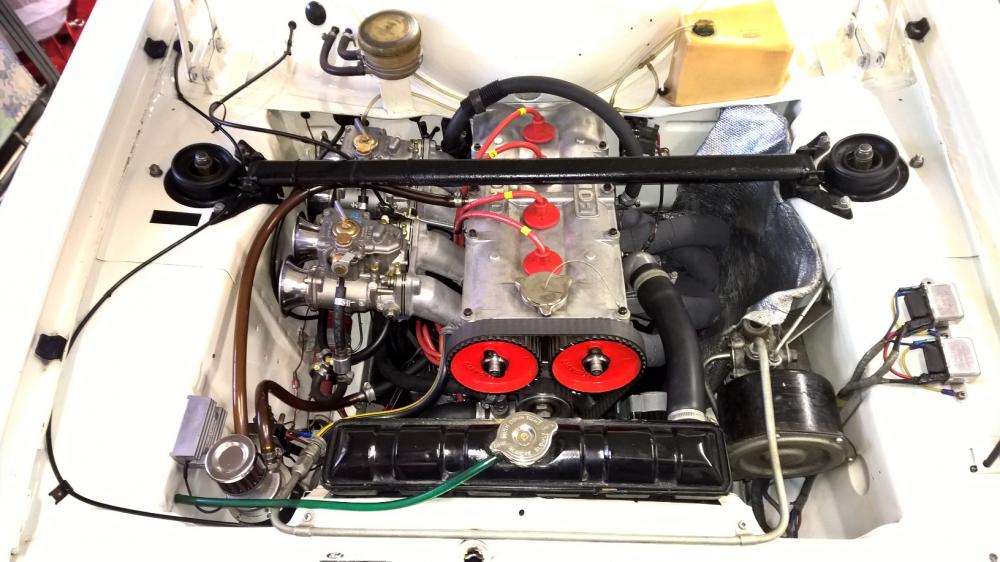
No nothing.
No Mods. No rockers. Just a chunky knob, thats now been replaced by an RS knob innit.
No tackiness.
Std as Ford intended, but with a space saver wheel and jack and nuts and wheel brace. oh.. and flaps, a man has got to have flaps.
Innit?
January 31, 2020 at 5:56 PM #139378Hi,
I’m new to the forum and i signed up just to say this helped me out greatly, i recently bought a 66 plate MK 3 RS with the recall done (gasket and head replaced) i’m encountering horrible idle on start up.. time to go back into Ford.
Thanks,
Jamie
-
AuthorPosts